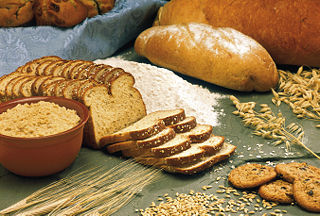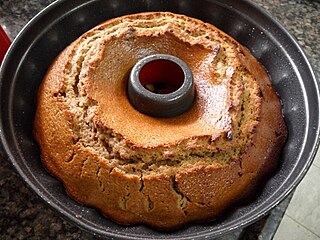
The Passover Seder is a ritual feast at the beginning of the Jewish holiday of Passover. It is conducted throughout the world on the eve of the 15th day of Nisan in the Hebrew calendar. The day falls in late March or in April of the Gregorian calendar. Passover lasts for seven days in Israel and, among most customs, eight days in the Jewish diaspora. Where seven days of Passover are observed, a seder is held on the first night; where eight days are observed, seders are often held on the first two nights, the 15th and 16th of Nisan. The Seder is a ritual involving a retelling of the story of the liberation of the Israelites from slavery in ancient Egypt, taken from the Book of Exodus in the Torah. The Seder itself is based on the Biblical verse commanding Jews to retell the story of the Exodus from Egypt: "You shall tell your child on that day, saying, 'It is because of what the LORD did for me when I came out of Egypt.'" At the seder, Jews read the text of the Haggadah, an ancient Tannaitic work. The Haggadah contains the narrative of the Israelite exodus from Egypt, special blessings and rituals, Talmudic commentaries, and Passover songs.

The Haggadah is a Jewish text that sets forth the order of the Passover Seder. According to Jewish practice, reading the Haggadah at the Seder table is a fulfillment of the mitzvah to each Jew to tell their children the story from the Book of Exodus about God bringing the Israelites out of slavery in Egypt, with a strong hand and an outstretched arm.

Selichot are Jewish penitential poems and prayers, especially those said in the period leading up to the High Holidays, and on fast days. The Thirteen Attributes of Mercy are a central theme throughout these prayers.

Challah or hallah, also known as berches in Central Europe, is a special bread in Jewish cuisine, usually braided and typically eaten on ceremonial occasions such as Shabbat and major Jewish holidays.

Jewish cuisine refers to the worldwide cooking traditions of the Jewish people. During its evolution over the course of many centuries, it has been shaped by Jewish dietary laws (kashrut), Jewish festivals and holidays, and traditions centred around Shabbat. Jewish cuisine is influenced by the economics, agriculture, and culinary traditions of the many countries where Jewish communities have settled and varies widely throughout the entire world.
A seudat mitzvah, in Judaism, is an obligatory festive meal, usually referring to the celebratory meal following the fulfillment of a mitzvah (commandment), such as a bar mitzvah, bat mitzvah, a wedding, a brit milah, or a siyum. Seudot fixed in the calendar are also considered seudot mitzvah, but many have their own, more commonly used names.

The Passover Seder plate is a special plate containing symbolic foods eaten or displayed at the Passover Seder. It is used to show all the symbolic foods that are used for the Passover Seder.

Birkat Hamazon, known in English as the Grace After Meals, is a set of Hebrew blessings that Jewish law prescribes following a meal that includes at least a kezayit (olive-sized) piece of bread. It is understood as a mitzvah based on Deuteronomy 8:10.

Pesachim, also spelled Pesahim, is the third tractate of Seder Moed of the Mishnah and of the Talmud. The tractate discusses the topics related to the Jewish holiday of Passover, and the Passover sacrifice, both called "Pesach" in Hebrew. The tractate deals with the laws of matza and maror, the prohibitions against owning or consuming chametz (leaven) on the festival, the details of the Paschal lamb that used to be offered at the Temple in Jerusalem, the order of the feast on the first evening of the holiday known as the Passover seder, and the laws of the supplemental "Second Pesach".

Teiglach, also spelled taiglach or teglach are small, knotted pastries boiled in a honeyed syrup. They are a traditional Ashkenazi Jewish treat for Rosh Hashana, Sukkot, Simchat Torah, and Purim.

Lekach is a honey-sweetened cake made by Jews, especially for the Jewish holiday of Rosh Hashanah. Known in Hebrew as ugat dvash, the word lekach is Yiddish. Lekach is one of the symbolically significant foods traditionally eaten by Ashkenazi Jews at Rosh Hashanah in hopes of ensuring a sweet New Year.
In Judaism, when the Eve of Passover falls on Shabbat, special laws regarding the preparation for Passover are observed.

Rosh HaShanah is the New Year in Judaism. The biblical name for this holiday is Yom Teruah. It is the first of the High Holy Days, as specified by Leviticus 23:23–25, that occur in the late summer/early autumn of the Northern Hemisphere. Rosh Hashanah begins ten days of penitence culminating in Yom Kippur, as well as beginning the cycle of autumnal religious festivals running through Sukkot which end on Shemini Atzeret in Israel and Simchat Torah everywhere else.

Tu BiShvat is a Jewish holiday occurring on the 15th day of the Hebrew month of Shevat. It is also called Rosh HaShanah La'Ilanot, literally "New Year of the Trees". In contemporary Israel, the day is celebrated as an ecological awareness day, and trees are planted in celebration.
Rosh Hashanah L'Ma'sar Behemah or Rosh Hashanah LaBehemah is one of the four New Year's day festivals in the Jewish calendar as indicated in the Mishnah. During the time of the Temple, this was a day on which shepherds determined which of their mature animals were to be tithed. According to the first opinion, the day coincides with Rosh Chodesh Elul, the New Moon for the month of Elul, exactly one month before Rosh Hashanah. However, the halacha follows the second opinion that the day coincides with Rosh Hashanah itself.

The blowing of the shofar is a ritual performed by Jews on Rosh Hashanah. The shofar is a musical horn, typically made of a ram's horn. Jewish law requires that the shofar be blown 30 times on each day of Rosh Hashanah, and by custom it is blown 100 or 101 times on each day.
Speak unto the children of Israel, saying: In the seventh month, in the first day of the month, shall be a solemn rest unto you, a memorial proclaimed with the blast of horns, a holy convocation.

Apples and honey is a traditional dish served by Ashkenazi Jews on Rosh Hashanah, the Jewish New Year's Day and the beginning of the High Holidays.
New Year's foods are dishes traditionally eaten for luck in the coming year. Many traditional New Year dishes revolve around the food's resemblance to money or to its appearance symbolizing long life, such as long noodles or strands of sauerkraut. Sweets, symbolizing a sweet new year, are often given or consumed. Some cultures and religions have evolved complex food traditions associated with the new year.

May we be the head and not the tail is a traditional request associated with eating a sheep's or fish head as part of the Rosh Hashanah symbolic foods.















